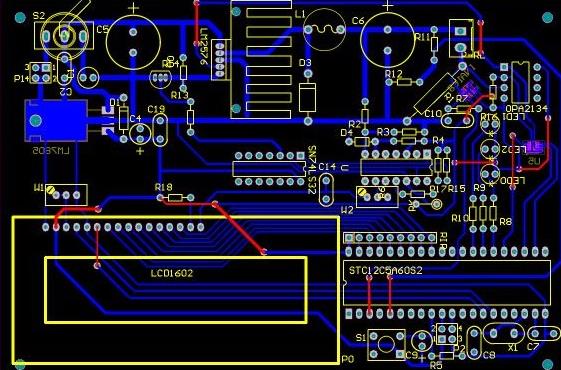The frequency of electronic signals and processors of electronic equipment is constantly increasing, and the electronic system has become a complex device that contains a variety of components and many sub-systems. High density and high speed will aggravate the radiation of the system, while low pressure and high sensitivity will reduce the immunity of the system. Therefore, electromagnetic interference (EMI) really threatens the safety, reliability and stability of electronic equipment. When we are designing electronic products, the design of the PCB board is very important to solve the EMI problem. This article mainly explains the points that should be paid attention to when designing PCB, so as to reduce the problem of PCB electromagnetic interference.
The definition of electromagnetic interference (EMI)

Electro Magnetic Interference (EMI, Electro Magnetic Interference) can be divided into radiation and conduction interference. Radiated interference means that the interference source uses space as a medium to interfere with its signal to another electrical network. Conducted interference is the use of conductive media as a medium to interfere with signals on one electrical network to another electrical network. In high-speed system design, integrated circuit pins, high-frequency signal lines and various plugs are common sources of radiation interference in PCB board design. The electromagnetic waves they emit are electromagnetic interference (EMI), which will affect themselves and other systems. normal work.
PCB board design skills for electromagnetic interference (EMI)
There are many solutions to EMI problems in PCB board design skills, such as: EMI suppression coating, suitable EMI suppression parts and EMI simulation design. The above video introduces ways to reduce EMI. Now briefly explain these techniques.
Tip 1: Common mode EMI interference source (such as the voltage drop formed by the transient voltage formed on the power bus bar at both ends of the inductance of the decoupling path)
- Using low-value inductors in the power layer will reduce the transient signals synthesized by the inductors and reduce common mode EMI.
- Reduce the length of the wiring from the power layer to the IC power pin.
- Use 3-6 mil PCB layer spacing and FR4 dielectric material.
Technique 2: Electromagnetic shielding
- Try to put the signal traces on the same PCB layer and close to the power layer or ground layer.
- The power plane should be as close as possible to the ground plane
Technique 3: Layout of parts (different layouts will affect the interference and anti-interference ability of the circuit)
- Perform block processing according to different functions in the circuit (such as demodulation circuit, high-frequency amplifier circuit, and mixer circuit, etc.). In this process, the strong and weak electrical signals are separated, and the digital and analog signal circuits must be separated.
- The filter network of each part of the circuit must be connected nearby, which can not only reduce the radiation, but also improve the anti-interference ability of the circuit and reduce the chance of interference.
- The parts that are susceptible to interference should be arranged to avoid interference sources, such as the interference of the CPU on the data processing board.
Tip 4: Wiring considerations (unreasonable wiring will cause cross interference between signal lines)
- There should be no traces close to the frame of the PCB board to avoid disconnection during production.
- The power cord should be wide, so the loop resistance will be reduced.
- The signal line should be as short as possible, and the number of vias should be reduced.
- Right angle method cannot be used for corner wiring, 135° angle is better.
- The digital circuit and the analog circuit should be isolated by ground wire, and the digital ground wire and analog ground wire should be separated, and finally connect to the power ground
Reducing electromagnetic interference is an important part of PCB design. As long as you think more about it when designing, it will naturally be easier to pass product tests such as EMC tests. (Source: DesignSpark)